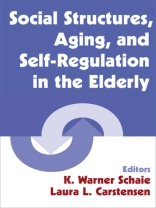This collection considers ways in which societal contexts influence aging by influencing self-regulatory processes. No one doubts that the social contexts in which individuals develop exert strong influence on life trajectories. Those born into environments that provide high quality education, supportive social relations, and economic assets do better in old age than those born into environments bereft of such resources. The extent of this influence, however, is only beginning to be revealed. Recent research shows that life experiences influence basic brain structures (e.g. the effect of musical training on neural organization) and functions (e.g. inflammatory processes), and that social embeddedness may even protect against Alzheimer’s disease. Similarly, education increasingly appears to have a ‘real’ effect on neural integrity. Thus, societal contexts may not simply open or close doors for individuals, but may influence self-regulatory processes at the most basic levels of functioning.
Although social structures are generally seen as the independent variables that affect individual aging, it is also possible to think of a lifetime development of self-regulatory processes leading to behaviors in old age that can have impact on and modify societal structures. Two parts of this book consider self-regulation as the dependent variable, asking how social contexts influence cognitive, emotional, and self-regulatory processes. The third part reverses the question, treating self-regulation as the independent variable and retirement and physical health as dependent variables. In this part, consideration is given to how the effectiveness of self-regulation influences physical and economic outcomes in old age.
Tabella dei contenuti
‘
Preface
Commentary: Societal Factors in Cognitive Aging: One Eye Wide Shut?,
Naftali Raz
Commentary: Societal Influences on Cognition in Historical Context,
K. Warner Schaie
Commentary: The Dynamic Relationship between Age Stereotypes and Wisdom in Old Age,
Becca Levy and Corey Pilver
Commentary: From Kindling to Conflagration: Self-regulation and Personality Change
Brent W. Roberts
Commentary: Can Self-Regulation Explain Age Differences in Daily, Weekly, and Monthly Reports of Psychological Distress?,
David M, Almeida, Michelle Neiss
Commentary: Modeling the Retirement Decision,
Joseph F. Quinn
Commentary: Numbers are Just Numbers,
Ellen Peters
Commentary: Mechanisms of Health Disparities: Variations in Health Care Provider Attitudes and their Impact on Older Minority Adults,
Stephanie L. Garrett and Toni P. Miles
Commentary: Adding Paths to Resilience and Daily Accounts to an Already Rich Field of Inquiry: A Brief Commentary on James Jackson’s ”Social structure and Health Disparities, ”
Alex J. Zautra, Kate E. Murray, and Brendt P. Parish
Subject Index
Name Index
‘












